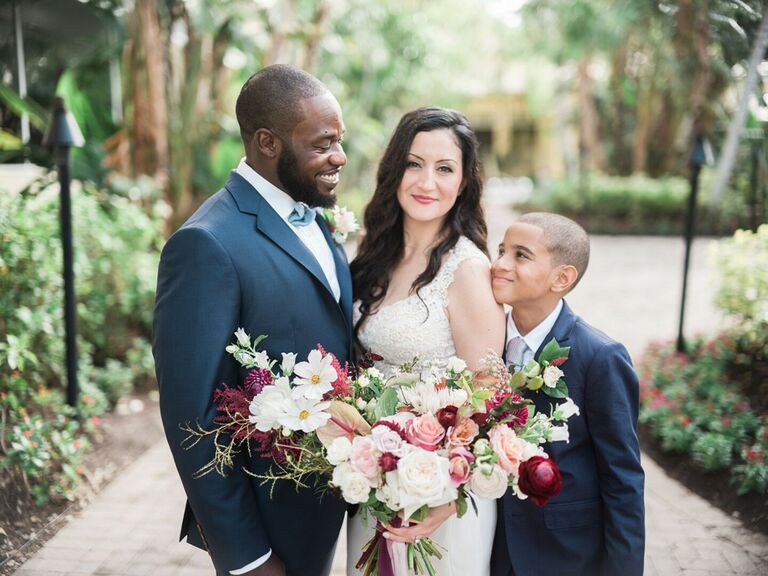The median age at first marriage for women was 27.9 years in 2014-2018, up from 26.3 in 2006-2010. The median age at first marriage for men was 29.7 years in 2014-2018, up from 28.1 in 2006-2010. Age at first marriage also varies widely across states and local areas.
Surprise! (Or is it?) According to The Knot 2020 Real Weddings Study, the average age of marriage in the U.S. remains steady. The data, which surveyed 7,600 couples in the US who originally set their wedding date between January 1 and December 31, 2020, revealed the national average marital age continues to hold despite a diverse pool of respondents. Another point worth noting is the average age of marriage in the last decade, which has steadily increased as well.
The 2020 Average Age of Marriage
In 2020, the average age of marriage for female participants was 31, while male respondents married at age 33. The average age of marriage in the US therefore falls at 32 years. Presumably, it’s the average age of the first marriage for the majority of participants, and this number is influenced by a variety of factors. Overall societal behavioral patterns, including an evolving workforce and a stronger sense of self-sufficiency, play a role in influencing the average age of marriage in the US.
“We’re realizing that the brain doesn’t fully develop until people are around 25, which is very different from how people used to think about adulthood, which was 18 or college age,” says New York-based clinical psychologist Dr. Lara Friedrich. “People are taking longer to find themselves, which is a good thing. By the time people are getting married, they have a better sense of who they really are, meaning they’re more secure in their career and their sense of self the older they get. And that helps them make good decisions with their life partner.”
“Life is not so traditional anymore,” adds Kathleen Entwistle, Private Wealth Advisor and Managing Director of Sports and Entertainment at Morgan Stanley. “Many couples are both working, therefore they are getting married later.”
So how exactly does the increase in the average age of marriage impact weddings? Year over year, the Real Weddings Study finds that more couples are contributing to the total cost of the wedding, as opposed to solely relying on parents on either side to financially support the nuptials. “The finances of each family can also be a factor,” Entwistle speculates. “When the average age of marriage increases, couples tend to take more ownership in both the details of the wedding, as well as the sharing of the expenses.”
The Average Age of Marriage By Region
Not-so-surprising is that the average age of couples varies according to region. Among 2020 couples, the data indicates the average age of marriage skews slightly higher out West (brides, age 31, and grooms, age 33) while couples in the South will wed, on average, at age 31. Regionality certainly has its impact on a variety of factors related to wedding planning, including the average cost of a wedding, the average number of guests and, of course, the average age of marriage.
“Even micro-regional influence counts,” says Dr. Friedrich, who also attributes education level and socioeconomics as top factors that play into the overall formula of marriage age. “And if you work with clients who are religious, there might be the possibility of lower averages in the age of marriage.” See how it breaks down per region below.
Northeast (New England and Mid-Atlantic): Female, 31, Male, 32; Average Age of Couple, 31
Midwest: Female, 29, Male, 31; Average Age of Couple, 31
South/Southeast: Female, 30, Male, 31; Average Age of Couple, 31
Southwest: Female, 29, Male, 31; Average Age of Couple, 30
West: Female, 31, Male, 33; Average Age of Couple, 32
The Average Age of Marriage By State
According to our 2019 Real Weddings Study data, couples based in certain states across the U.S. will skew based on locale, depending on towns and proximity to close friend groups. “There’s research on this that people are very influenced by their peers,” says Dr. Friedrich. “There’s a very real peer effect where people see their friends and inner circle getting married and that can cause more pressure. People’s influence on each other and their social circles can be very strong.” See the state-by-state breakdown below.
Alabama, 30
Arkansas, 30
Arizona, 33
California, 33
Colorado, 32
Connecticut, 33
Delaware, 33
D.C. (Metro DC, Maryland, Northern Virginia), 33
Florida, 34
Georgia, 32
Hawaii, 36
Idaho, 32
Iowa, 30
Illinois, 32
Indiana, 30
Kentucky, 31
Kansas, 29
Louisiana, 32
Maine, 33
Maryland, 33
Massachusetts, 33
Michigan, 32
Minnesota, 31
Mississippi, 32
Missouri, 31
Montana, 31
Nebraska, 30
Nevada, 37
New Hampshire, 33
New Jersey, 33
New Mexico/ Arizona, 33
New York, 33
North Carolina, 32
Dakotas (North & South Dakota), 32
Ohio, 31
Oklahoma, 30
Oregon, 32
Pennsylvania, 32
Rhode Island, 33
South Carolina, 33
Tennessee, 31
Texas, 32
Utah, 29
Vermont, 33
Virginia, 32
Washington, 32
West Virginia / Virginia, 31
Wisconsin, 31
Wyoming / Wyoming, 32
Millennial marital success is still being reviewed by researchers, but there is one strong habit to properly form from the onset of marriage (and the relationship itself). “Communication is key,” says Dr. Friedrich. “Communicating with each other that allows you to listen, avoiding defensiveness, criticism, stonewalling and contempt are four things that lead couples down the road to divorce, according to the Gottman Institute [a research-based theory that focuses on marital stability]. Taking time to speak and communicate in a way that is meaningful can be useful.”



